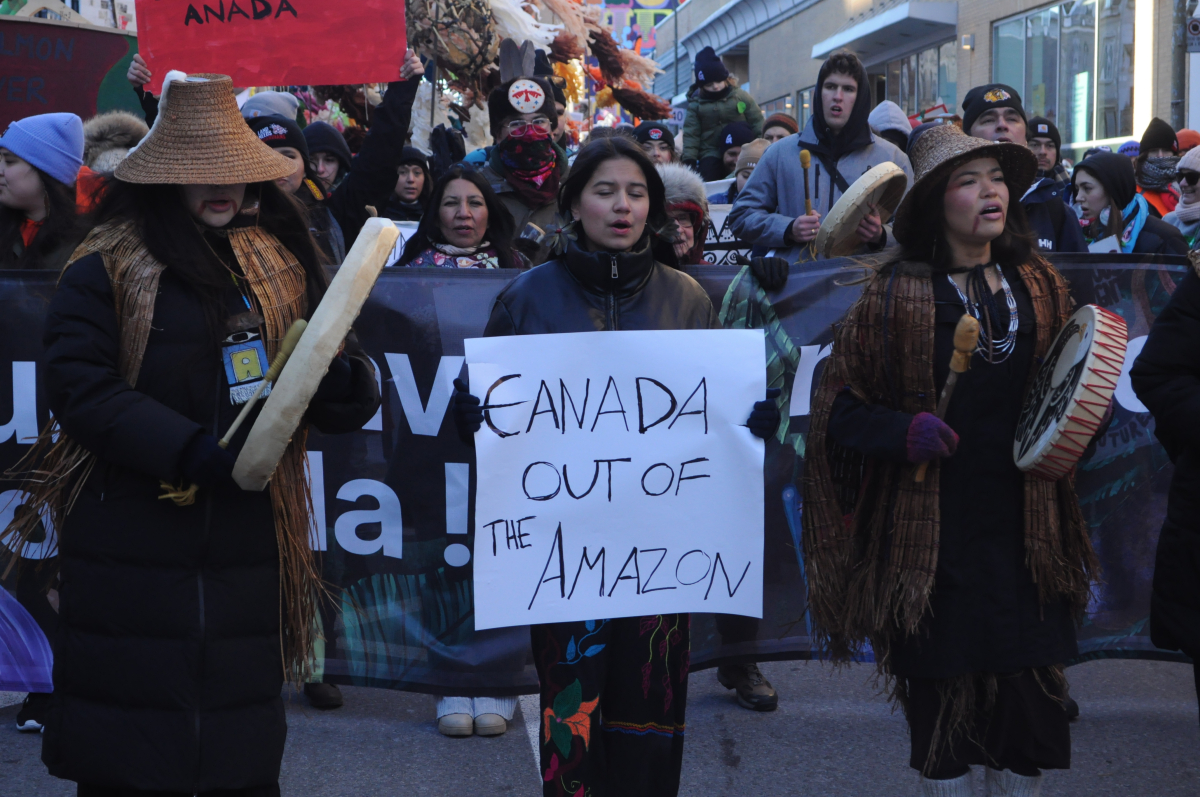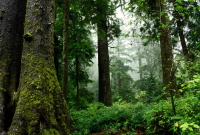Support strong Canadian climate journalism for 2025
When the dust settles at the end of this month’s United Nations COP15 biodiversity conference, it will be clear it has bitten off more than it could chew.
The conference’s aims are herculean. The stakes are high. The end goal is harmony with nature. Solving plastic waste, curbing pesticide use, and the protection of 30 per cent of the planet are all on the docket at the Montreal negotiations.
This last goal, coined “30 by 30”, would see countries commit to preserving 30 per cent of their land and aquatic territory by 2030. It’s a good catchphrase, but a bad idea.
What 30 by 30 effectively proposes is making more parks. But more parks won’t fix the biodiversity crisis.
The goal is being pushed by Canada for selfish reasons. By championing this cause, Canada is ignoring a homegrown tool available for the protection of biodiversity — Aboriginal rights.
What is biodiversity?
Biodiversity, simply put, is all life on Earth — all the plants and animals that make up the ecosystems, terrestrial and aquatic.
And biodiversity is squarely in crisis. We are living through the Holocene “mass extinction event.” This is the same class of event that wiped out the dinosaurs. But instead of an asteroid hitting Earth, humanity is.
There’s a grizzly bear on the California state flag, but there hasn’t been a wild grizzly in the Golden State for 100 years. We may be heading for a similar reality in Canada. Many of the plants and animals we identify with and rely on — bears, salmon, whales, cedar, maple — are all threatened.
Pull enough threads from the web of life, and we put ourselves at risk. As we lose biodiversity, we lose undiscovered medical treatments and technologies. We lose sources of food and revenue. We lose icons of state and culture.
The solution we don’t need
Don’t get me wrong. I love parks and want more of them. But they will not solve the biodiversity crisis.
Not all parks are created equal, nor do they receive equal funding. Every province plus the federal government has their own version of a parks act. Varying legislation has varying degrees of protection. In some parks, resource exploration or even extraction may be allowed. “Park” doesn’t always mean protected.
Where to put the new parks is another issue. It is relatively easy for Canada to set aside large chunks of its North and celebrate achieving 30 by 30. But this would do nothing to protect the rare and threatened ecosystems in the south of the country.
Parks aren’t even entirely dedicated to the protection of the environment. Parks legislation is generally interpreted to have dual purposes, both recreation and conservation. The impacts of recreation on park space can be significant — more cabins in Jasper National Park might not have been best for the Maligne caribou herd.
National parks in the United States have been around for 150 years. Canada celebrated the 150 anniversary for its parks system in 2017. Since the creation of these parks, biodiversity has only gotten worse.
If parks aren’t going to solve biodiversity, then why is Canada promoting them as a solution?
Because it is an easy sell. Preserving 30 per cent of Canada is easy compared to a country like Singapore. But a bigger reason might be that Canada wants the conference they are co-hosting to succeed. They want a win they can celebrate, with Canada at the fore.
With many nations already on board, 30 by 30 might be one of the few successes coming out of COP15. If so, time will prove it a pyrrhic victory.
How Aboriginal rights can protect biodiversity
But we are lucky in this country, too. Since at least 1982, Aboriginal rights have been a tool to protect biodiversity. Aboriginal rights fit within the tenets of multiculturalism that are central to this country’s narrative.
Repatriated from the United Kingdom, the Canadian Charter of Rights and Freedoms states:
“The existing Aboriginal and treaty rights of the Aboriginal Peoples of Canada are hereby recognized and affirmed.”
In 1992, the Supreme Court of Canada stated that an Aboriginal right is “one of the things which made the culture of the society distinctive.”
What the Charter is protecting is a culture, but it is often reduced to a simple form. Aboriginal rights include rights to plant species that were farmed (yes, there was agriculture in Canada before European contact) and animal species that were hunted.
Aboriginal rights include the right to hunt a particular species, but they are more than that. They protect the “meaningful exercise” of that right.
To have a meaningful right to hunt moose, you need access to moose habitat and a harvestable surplus of moose. A harvestable surplus of moose requires an environment capable of supporting a healthy population of moose.
By focusing on the protection of particular species, Aboriginal rights could be a major tool for the protection of biodiversity through the stewardship of capstone species or essential ecosystems.
Canadian courts have increasingly recognized Indigenous legal power. But these rights aren’t just granted in court, they are fought for. Government recognition and support could bypass this step and our country could show the UN a practical solution to the biodiversity crisis.
A copout at COP15
When the founding details of government were settled in 1867, neither the provinces nor the federal government were given responsibility for the environment. Both are stuck with it.
With neither addressing what the Supreme Court considered a generation ago to be “one of the major challenges of our time,” there is a void for Aboriginal rights to fill.
But what we might be getting from COP15 is more parks. Our government is pushing a solution that won’t work at a problem we already have the tools to fix.
Owen Leggatt Stewart is an Aboriginal rights lawyer and director with the Sierra Club of Canada Foundation. Raised in Burnaby, B.C., he now lives in Campbell River.






Comments
There are also First Nations groups that want what from a climate and biodiversity standpoint are inherently destructive, and their main demand is that the jobs and profits go to them.
It's a fine line to walk, between First Nations control, and what they'll allow for the same reasons as non-First Nations resource extractors.
An example of "just looking good" might be the "protection" of a watershed in Manitoba, which was already "protected" as a Heritage reserve. I've been unable to find, so far, if the new status provides greater protected area, or greater kinds of protection than before. What is clear, though, is that it covers land that's pretty much unamenable to any kind of development, from the get-go. I.e., it might be a kind of 30/30 protection green-washing.
If anyone knows whether the new protected status has actually added anything that wasn't already there, I'd be really interested to hear!
Here's an example of pro-LNG (albeit misinformed) First Nations group leadership:
https://canadatoday.news/ca/lng-coalition-faces-uncertain-future-after-…
This idea reads like just another attempt to hitch 'indigenous rights' to an important issue, like 'climate change', in this case 'biodiversity', to draw attention to the wrongs of colonialism, without proposing a sensible, practical way towards reconciliation or compensation.
As pointed out above, giving a first nation control can result in exploitation and development as band members opt for a cash society and modern standard of living - and why shouldn't they? Creating National Parks would largely get around this problem (but not those of reconciliation, etc.)
A problem of a different order is equating the current ecological mix with a 'biodiversity' that must be preserved. Is an ecology less biodiverse if it changes through a natural progression to an ecology with fewer species? Technically, yes, but perfectly natural. Is it a problem if human disturbance changes an ecology into one with a higher but different species count, technically increasing biodiversity? And in a geological time frame, past mass extinctions have lead to explosions in biodiversity and increases in biological complexity - is that a good thing or not? How human centred must our solutions be?